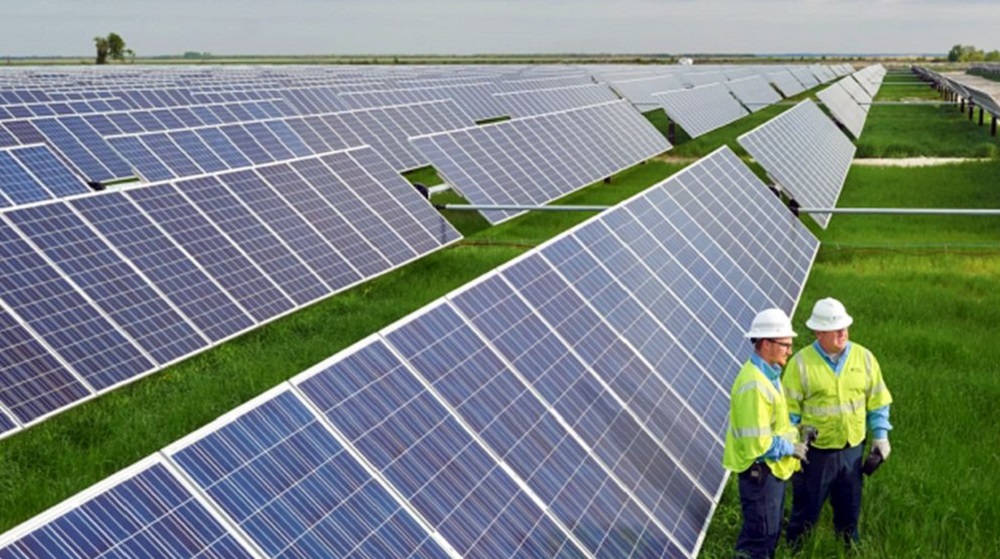U.S. utilities that accounted for about half of the nation’s coal and gas generating capacity in 2021 plan to add 115 GW of solar and 39 GW of wind capacity by 2030, replacing “only” 30% of their 2022 coal and gas generation, according to an analysis by the nonprofit Sierra Club.
The utilities also plan to build 53 GW of new gas capacity by 2030, up “nearly 40%” from last year, the environmental organization said.
The Sierra Club cited studies showing that clean energy is less expensive than 99% of existing coal and new gas generation.
The analysis covers 77 utility companies owned by the 50 utility parent companies that had the most coal and gas generating capacity as of 2021. The Sierra Club assigned a grade to each utility based on its projected progress in transitioning to renewables through 2030. Considering all the utilities together, the club assigned them a composite grade of D.
“Utilities are failing,” said Sierra Club Executive Director Ben Jealous, “and even worse, they seem to be OK failing to protect our health and our collective future.”
The Public Service Company of Oklahoma earned a grade of A and a perfect score of 100. The utility has reported plans to replace all of its coal and gas generation by 2030 with 1.6 GW-ac of solar and 2.8 GW-ac of wind capacity. The analysis does not report any utility’s planned additions of storage capacity.
Five other utilities also earned an A grade:
- Northern Indiana Public Service Company
- Entergy Arkansas
- Xcel Minnesota
- NV Energy – Nevada Power Company
- NV Energy – Sierra Pacific Power Company.
Twenty-nine utilities received a grade of F, including 12 with a score of zero. The scoring system gave points for planned new renewable capacity and coal plant retirements, and subtracted points for any planned new gas capacity. The full dataset is available through a Tableau dashboard.
To compile data on planned solar and wind capacity additions, the Sierra Club referred to integrated resource plans for utilities that file them publicly, corporate announcements of solar and wind projects, and the S&P Global Market Intelligence database.
The Sierra Club presented three case studies of the utilities it analyzed. Duke Energy Corporation’s five investor-owned utilities, said Cara Fogler, managing senior analyst at the Sierra Club and coauthor of the report, has the most coal capacity and the second most planned gas capacity of any parent company analyzed, and “must build five times as much” solar and wind capacity as it currently plans “to replace their massive fossil fuel generation.”
Ameren Missouri has pledged to achieve net-zero emissions by 2045, but Fogler said that in its most recent resource plan, “the utility remains committed to operating its massive coal-burning plant into the 2040s.”
NextEra subsidiary Florida Power and Light, Fogler said, “is one of the leading utilities” transitioning to clean energy, “but still has room to improve,” as the utility’s planned solar and wind capacity would replace about “one-third” of its fossil fuel generation.
The Sierra Club’s analysis consists of the Tableau database and a written report titled “The Dirty Truth About Utility Climate Pledges,” and is the third in an annual series that began in 2021.
This content is protected by copyright and may not be reused. If you want to cooperate with us and would like to reuse some of our content, please contact: editors@pv-magazine.com.








By submitting this form you agree to pv magazine using your data for the purposes of publishing your comment.
Your personal data will only be disclosed or otherwise transmitted to third parties for the purposes of spam filtering or if this is necessary for technical maintenance of the website. Any other transfer to third parties will not take place unless this is justified on the basis of applicable data protection regulations or if pv magazine is legally obliged to do so.
You may revoke this consent at any time with effect for the future, in which case your personal data will be deleted immediately. Otherwise, your data will be deleted if pv magazine has processed your request or the purpose of data storage is fulfilled.
Further information on data privacy can be found in our Data Protection Policy.